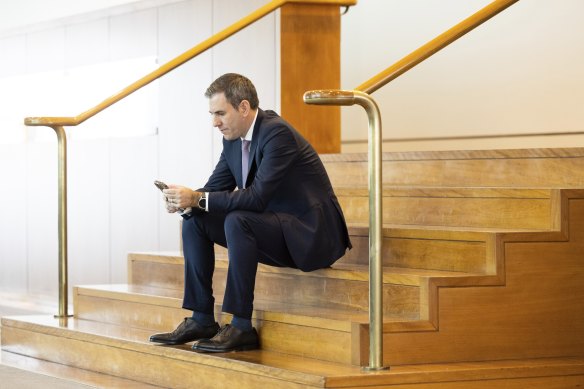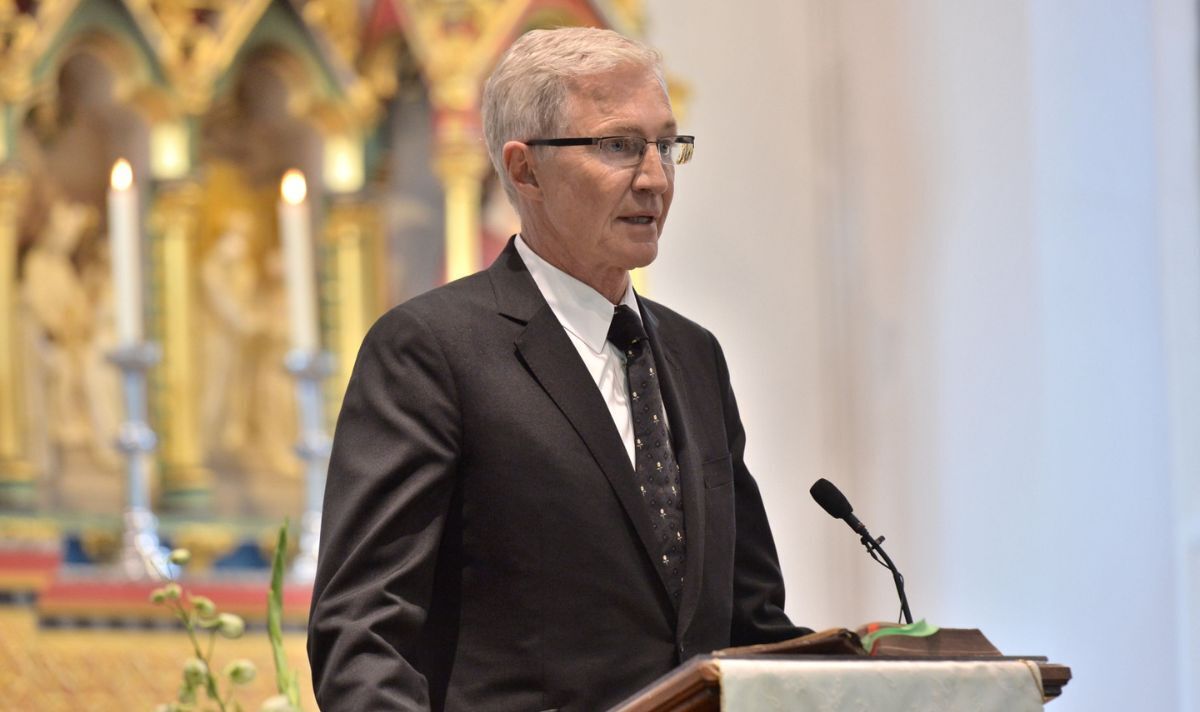Save articles for later
Add articles to your saved list and come back to them any time.
It’s one of the truest adages of government – budgets are about choices.
When Treasurer Jim Chalmers stands up in the House of Representatives on May 9 to deliver his second budget, the document will reflect the collective choices of the Albanese government.
Those choices will be dictated by ideology, government promises, the state of the economy and budget, what is politically achievable and ideas that have come from a whole host of interest groups.
Treasuer Jim Chalmers – his May 9 budget will have to balance many expensive but important ideas against the state of the economy and budget.Credit: Alex Ellinghausen
Proposals from two very large interest groups lobbed in Chalmers’ in-tray this week – and they highlight what the government may want to do versus what is affordable and achievable.
The reports from the government-appointed Economic Inclusion Advisory Committee and Women’s Economic Equality Taskforce, unsurprisingly, came up with a long list of defendable policies that would dramatically improve the lives of millions of Australians.
But they would also cause havoc to a budget that, in case anyone has forgotten, has been in deficit since 2008 and is carrying record levels of debt.
The biggest proposal, from the inclusion committee, is to increase JobSeeker to 90 per cent of the age pension. At present, it’s around 71 per cent.
The gap between JobSeeker and the pension reflects decades of government policy, from both sides of politics, not to increase support to the unemployed in line with other welfare payments.
The proposal highlights the choices governments have to make on behalf of taxpayers. To a single unemployed person, it would be worth an extra $180 a fortnight to help pay for food, rent, utilities and the like. But it would cost taxpayers $24 billion over the next three years.
Across all the 36 recommendations, which include proposals such as setting budget policy to target a 3.5 unemployment rate, the combined cost to taxpayers would be at least $34 billion.
That’s an additional $34 billion at a time of high inflation and large increases in interest rates that Deloitte Access Economics (among others) reckon is going to lead to a consumer recession over the next 12 months.
Both reports back a sharp increase in Commonwealth Rent Assistance. At present, the maximum help a single person can receive under the program is $157 a fortnight (that is if your rent is at least $350 a fortnight).
The nation’s median asking rent has climbed by $52 a week over the past year alone. Without a change in rent assistance, more of the nation’s lowest-paid are going to struggle to keep a roof over their heads.
But clearly identifying the cost of this worthy idea is difficult, in part because the rental market itself is in such a state of flux due to pent-up demand, the current return of international students in some markets and the problems in the building construction sector.
Soon after coming to office, Chalmers identified the top five “budget deadly sins” – those areas of expenditure growing at the quickest clip. Interest on government debt, the NDIS, aged care, health and defence remain the key fiscal pressure points.
There’s little the government can do to reduce the interest rate on government debt – but it can keep a lid on the debt carried by current and future taxpayers by limiting the size of the deficit (or even find a way to surplus).
This week, Bill Shorten signalled reforms to the NDIS, which is on track to be the government’s single largest expenditure without change. Aged Care Minister Anika Wells noted a further blowout in the provision of services to this vital area. Analysis by online healthcare directory Cleanbill showed people face out-of-pocket costs of at least $40 for a visit to a GP.
Next week, the strategic defence security review is due for release. The price tag for upgrading the nation’s defence assets will be measured in hundreds of billions of dollars.
All could be paid for by increasing taxes. As some on the political left demand, axing the stage 3 tax cuts would reap an additional $20-$25 billion a year in revenue.
That would also mean increasing tax on every person who earns more than $45,000 a year. And without those tax cuts, middle-income earners will pay a record share of their income to the taxman.
Proponents see the extra dollars available for spending, but don’t consider the macroeconomic impact of higher taxes on ordinary Australians. Anyone who suggests higher taxes don’t affect the economy is just as wrong as someone who says people on welfare are on easy street.
These are the types of choices Chalmers will have had to calculate by May 9.
Most Viewed in Politics
From our partners
Source: Read Full Article



